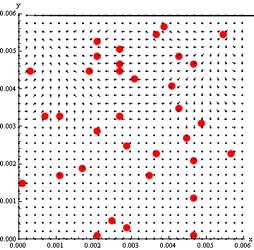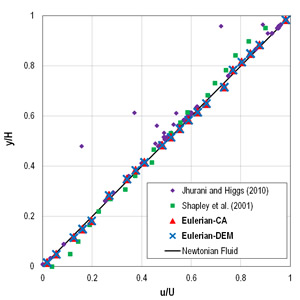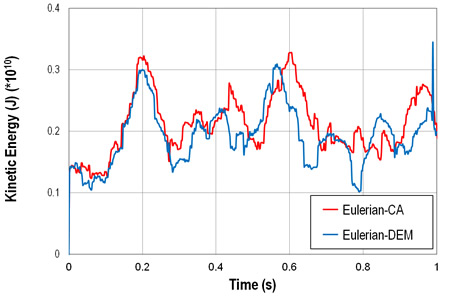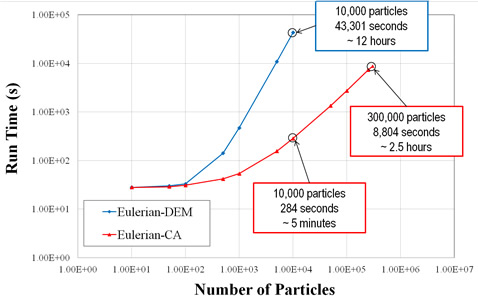|
Fast Multiphase (Fluid-Particle) Flow Modeling�
| Commonly found in nature and engineering, multiphase flows contain interacting media of different phases. Traditionally, there have been two ways to model such flows. First, the Eulerian-Eulerian approach, in which the phases are modeled as interpenetrating continua, is computationally efficient but does not provide the discrete particle locations. Second, in the Eulerian-Lagrangian approach, the dispersed phase is treated as individual particles interacting with a fluid continuum. However, this approach is computationally demanding, especially for flows containing a large number of particles. The current work introduces an Eulerian-Lagrangian approach to modeling multiphase flows, in which the particles are modeled using lattice-based cellular automata (CA), while the fluid is modeled as a continuum by means of computational fluid dynamics (CFD). This work examines the feasibility of the Eulerian-CA approach for modeling multiphase flows while achieving significant speedups in computational times. The simulation to the right shows a lid-driven cavity simulation where CA particles seed a fluid from a full Navier-Stokes CFD solver.� |
 |
| PFTL Research Assistant(s): |
|
Martin C. Marinack Jr.; Jeremiah N. Mpagazehe; Deepak C. Patil |
| Method(s) Employed: |
|
Cellular Automata Modeling, Computational Fluid Dynamics (CFD)� |
| Rig(s) and/or Software(s) Employed: |
|
Mathematica, C++� |
| Sponsor(s): |
|
NSF Graduate Research Fellowship
|
Sample Results:
Select PFTL References:
Marinack Jr., M.C., Mpagazehe, J.N., Higgs III, C.F., 2012, "An Eulerian, Lattice-based Cellular Automata Approach for Modeling Multiphase Flows," Powder Technology, 221, pp. 47-56. (Invited Paper).
Marinack Jr., M.C., Mpagazehe, J.N., Higgs III, C. F., 2010, "An Eulerian, Lattice-Based Cellular Automata Approach for Modeling Multiphase Flows," 10AIChE - 2010 AIChE Annual Meeting, Conference Proceedings, Salt Lake City, UT.
|







